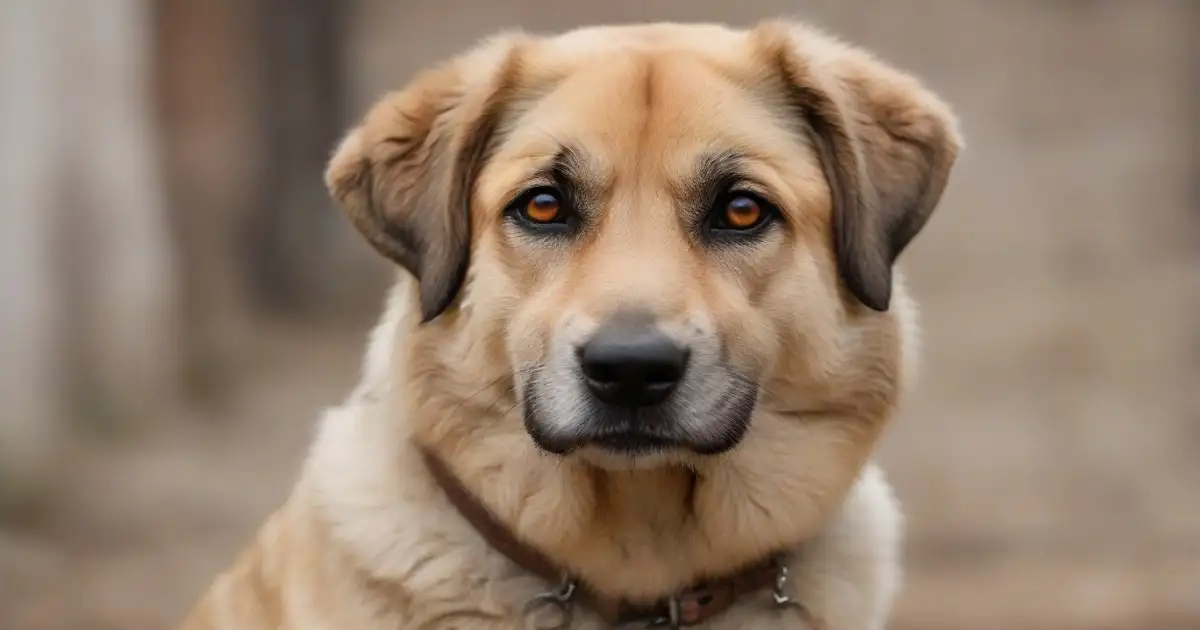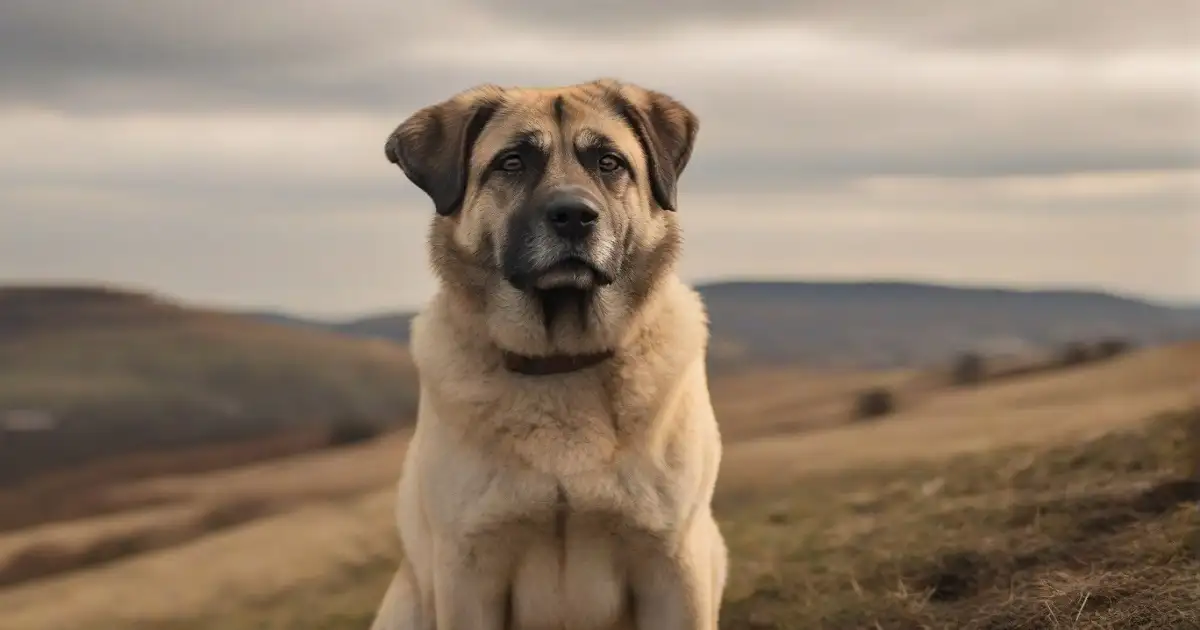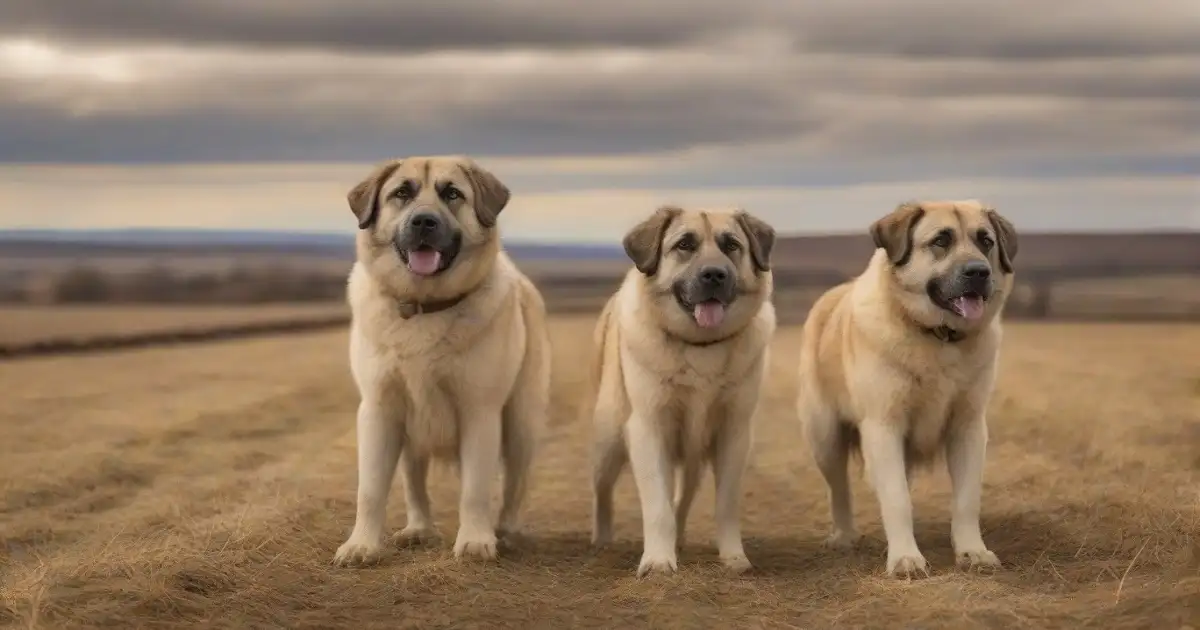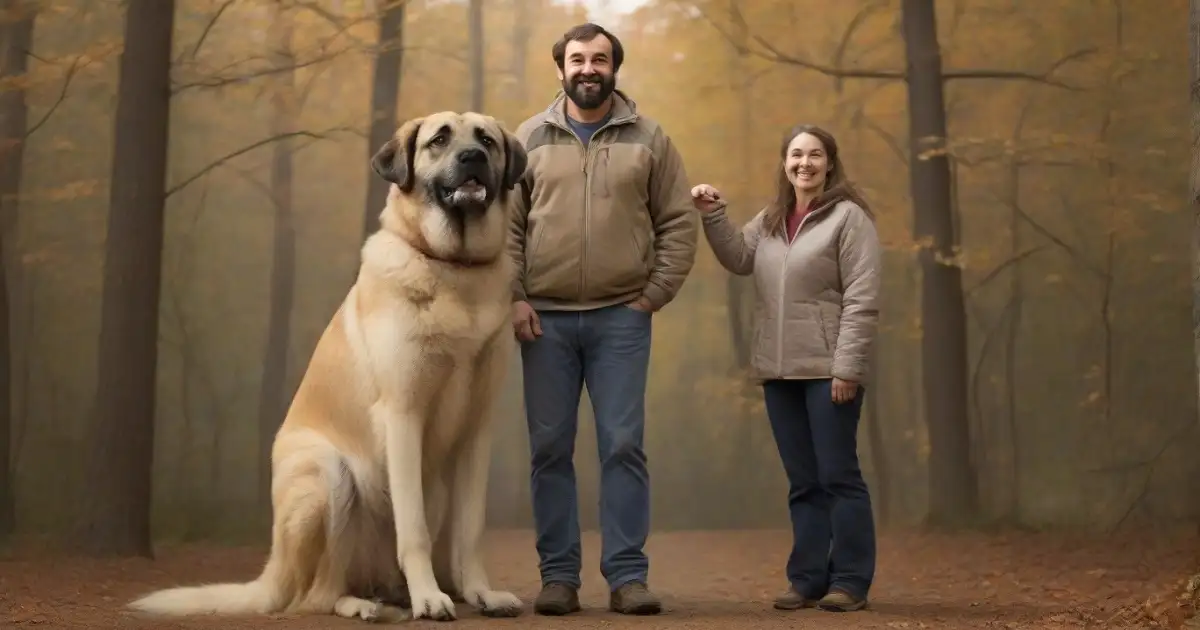Whoa there, don’t get ahead of yourself when you come across an Anatolian Shepherd Dog! You gotta understand the essence of this noble working breed first.
We’re talkin’ about a storied livestock guardian dog from ancient Anatolia with distinctive physical traits and behaviors.
Stick with me through this ride, and you’ll gain a comprehensive overview of the Anatolian Shepherd Dogs, from their history and looks to care, grooming and finding an ethical breeder.
I’ll highlight need-to-know details in easy-to-digest sections with bulleted lists and tables. Let’s dive in and uncover what makes this independent canine tick!
Stepping Back in Time: The Story Behind the Anatolian Shepherd Dog
The Anatolian Shepherd Dog’s roots trace back over 6,000 years to ancient Anatolia, an arid region that makes up most modern-day Turkey.
They evolved over millennia alongside nomadic shepherds to become trusted guardians of flocks against predators. More significant variants were more successful, leading the breed to be categorized as giants today…
When the breed first appeared and how it developed over centuries
References to shepherd dogs in Anatolia date back over 4,000 years to 2000 BC. Their specialized role as robust mountain dogs emerged between 3000 and 1000 BC based on artifacts and records.
With intelligence and independence valued over obedience, they patrolled territories up to 1000 acres day and night…
Introduction of the Anatolian Shepherd Dog to Europe and North America
First registered as a distinct breed in their native Turkey in the 1930s, Anatolian Shepherd Dogs later caught the world’s attention.
In the 1970s, breeders exported initial dogs to strengthen livestock guardian programs abroad dealing with predation issues. The Anatolian Shepherd Club of America was formed in 1970 once numbers grew large enough in the US to monitor breed purity…
The Signature Look of the Anatolian Shepherd Dog
General appearance, size, weight and height standards
The Anatolian Shepherd Dog is classified as a giant breed, with males standing 27-29 inches tall at the shoulder and weighing between 110-150 lbs.
Females are slightly smaller at 25-28 inches and 80-120 lbs. Overall, they are robust, with substantial bone density and powerful muscling. Height is more remarkable than length in a ratio of 10-9…
Descriptions of standard coat colors and markings
Common Anatolian Shepherd Dog coat shades include tawny, fawn, cream, golden, red, tan, piebald or white. Piebald refers to irregular large patches of white fur combined with other colors.
Brindle, black or shades of gray/silver are less prevalent. Markings can manifest as masks or white blazes on the head. Eyes, nose and lips have black pigment…
Facial features like eyes, ears, head shape and skull structure
The head shape is a defining feature, with a broad, slightly rounded skull that tapers gradually to a powerful muzzle. The expression conveys intelligence, independence and steadfastness.
Eyes are oval-shaped, slightly slanted and typically dark brown. Ears stand erect when alert – triangular with rounded tips. The muzzle is shorter than the skull length at a ratio of 2-3…
Musculature and proportions compared to similar guardian breeds
While closely related guardian breeds share the same muscular build, the Anatolian Shepherd Dog skeleton tends to be longer and leaner.
Their agility aids in challenging mountainous terrain. Their ribcage reaches further back along the loin versus other variations like the Akbash dog. The thick neck region with prominent dewlap skin helps ward off bites from large predators…
Differences between male and female Anatolian Shepherd Dogs
Males stand taller at 29 inches versus 28 inches for females, with considerable size/weight overlap between genders.
However, growth plates close later for males, making neutering before maturity necessary to prevent overgrowth. Females reach reproductive maturity faster at 7-8 months old.
While independent and challenging regardless of gender, unspayed females tend to demonstrate more territorial behaviors…
Temperament and Personality of the Anatolian Shepherd Dog Breed
Independent nature and high intelligence
Bred more for independent decision-making than attentiveness to commands, the Anatolian Shepherd Dog is brilliant but applies its thinking to worthwhile tasks. This makes training more challenging versus obedient breeds. Mentally keeping them engaged is critical…
Protective instincts and behavioral tendencies
Working guard dogs display focused protective behaviors, including patrolling territory, scent marking within their jurisdiction, confronting predators, and barking warnings.
They are attentive to subtle sights, sounds or smells indicating a threat. Anatolians continue these guarding behaviors into modern homes/farms and take bonding with “flocks” (people/livestock) seriously…
Socialization requirements starting in puppyhood
Extensive socialization with people outside the family must begin early. Without proper controlled exposure before 4 months old, suspiciousness towards strangers or reactivity to unfamiliar dogs can develop.
Social maturity happens between 18 and 36 months as they understand appropriate protective responses. Lifelong socialization is needed…
Interactions with family members, children, strangers and other dogs
Loyal and affectionate towards family, Anatolians tend to bond closely to a single owner. Children are viewed as their charges, and patient tolerance gives way to gentleness.
However, all interactions should be supervised due to size. They are reserved towards strangers unless better socialized, needing firm introductions…
With other dogs, compatibility varies based on early exposure. Same-gender aggression can occur. Overall, they prefer being solitary guardians with limited canine company.
Many don’t tolerate dogs of the opposite gender except for mating purposes. Slow introductions are recommended, ideally before maturity…
Challenges of owning this headstrong working breed
Prospective owners should consider the Anatolian’s strong, independent personality before choosing this breed.
Their natural wariness and size/power demand an experienced owner who can provide extensive structure, socialization, and leadership. They test boundaries continually and require lifelong management…
Exercise and Activity Needs of the Anatolian Shepherd Dog
Ideal backyard space and territory size
Anatolians were bred to patrol 1000+ acre territories independently, so they handled restricted spaces poorly without proper management.
Safely containing them is difficult as they can breach fences, requiring anchors, dig guards, additional height extensions, or supervision. Visible boundaries they can survey assist territorial behaviors…
Length and frequency of daily walks
They can cover 20+ miles daily in an agricultural setting, monitoring sheep herds. Pet Anatolians still need long daily walks to meet activity needs.
Young adults require more vigorous exercise, up to two hours, split into multiple sessions. Mature adults over age 2 transition to self-regulated moderate activity…
Obedience or working tasks to meet mental stimulation needs
Obedience training coupled with “jobs” to fulfill working heritage promotes mental engagement in household pets lacking livestock to guard.
Practice commands daily or assigns perimeter checks/property patrols to leverage natural behaviors. Interactive toys that challenge problem-solving provide mental exercise. Unchallenged Anatolians grow bored and destructive…
Risks of boredom, anxiety and destructive behavior
Young Anatolians kept confined/untrained demonstrate second-year destructive behaviors from boredom/frustration.
Digging under or chewing through containment develops. Anxiety from inadequate exercise shows as nervous pacing, territorial excess like lunging at windows, or emotional urination issues…
Importance of secure fencing due to wandering tendencies
As range-roving herd guardians bred to independently self-regulate activity, Anatolians display persistent wandering/escape behaviors.
Six-foot fencing often proves inadequate without anti-dig barriers at their maturity size. Constant reinforcement of territorial boundaries is needed to discourage escapes…
Health Issues Affecting Some Anatolian Shepherd Dogs
Common genetic conditions like hip and elbow dysplasia
20% of Anatolian Shepherd dogs show symptoms of hip dysplasia by age 5. Elbow dysplasia affects 7% overall.
Responsible breeders screen parent dogs for joint issues and avoid breeding dogs showing lameness. Supplements support joint health. Weight management assists dogs predisposed to mobility issues…
Other health problems that may impact the breed
- Entropion – inverted eyelids requiring correctional surgery
- Ectropion – sagging lower eyelids more prone to irritation
- Cardiac issues like dilated cardiomyopathy in 17% of dogs
- Higher cancer rates for bone, splenic and bladder tumors
- Deafness – mainly dogs with excess white coat pigment
- Higher anesthesia risks needing adjustment of protocols…
Typical lifespan and how to maximize it through proper care
The average lifespan is 10-13 years. Diet and exercise tailored for giant breed support joint health to prevent early mobility decline.
Socialization/training to tolerate handling assists veterinary care. Yearly exams catch emerging conditions early, along with teeth cleanings under anesthesia to manage gum disease risks…
Grooming Requirements for the Anatolian Shepherd Dog
Type of coat and seasonal shedding patterns
A weather-resistant double coat includes a thick, fleecy underlayer topped by slightly harsher guard hairs reaching 2-4 inches long over the body.
The longest coat fringe develops around the neck, forelegs and hindquarters. Shedding increases during seasonal changeovers from winter to summer coat and vice versa…
Recommended brushing and bathing schedule
Weekly brushing with a slicker or undercoat rake keeps shedding under control and prevents matting, often during heavy shed periods.
Bathing too frequently damages coat oils, so only bathe when dirty. Around 6 weeks is ideal, using a mild canine shampoo…
Trimming requirements for nails and hair around feet
Trim toenails, including double dewclaws, every 2-3 weeks as needed. Excess hair growth between foot pads should be trimmed to avoid debris catching or snowballs packing into feet during winter…
Checking ears and teeth regularly
Ears need regular weekly checks for redness indicating possible infections, ensuring the interior ear canal remains dry.
Teeth require brushing ideally every other day to control plaque buildup leading to gum disease in later years. Annual dental cleanings under anesthesia may still be needed…
Training Tips and Best Practices for Anatolian Shepherd Dog Owners
Importance of early and consistent training
As independent thinkers requiring strong leadership, training should begin at 8 weeks old, focusing on socialization, then progress to respect/relationship foundation work.
Life stages bring new training challenges. Consistency, firm/fair corrections, and understanding the Anatolian mindset are crucial to success…
Working with a firm trainer familiar with livestock guardian breeds
Seeking professional guidance from an instructor versed in the motivations/behaviors of working guardian breeds expedites training dramatically.
Force-free positive reinforcement alone often fails for Anatolians, who require more structured approaches. Correction collars properly fitted prevent injury if needed for focused attention…
Obedience cues to teach for safety and easier handling
Mastering a stop/stay cue improves safety exponentially due to size/strength. Step-by-step desensitization trains acceptance of handling feet, ears and mouth for vet exams.
Impulse control skills prevent bolting through doors or knocking people over. Loose leash walking refines directional responsiveness…
Socializing puppies appropriately to shape good behavior
Frequent positive exposures in the critical 4-16 week socialization window, followed by ongoing maturity socialization, prevent territorial behaviors.
Puppies meeting 100+ people in the first 16 weeks best adapts them to tolerate strangers. Exposure to urban environments acclimates them to sights/sounds…
Correcting unwanted behaviors like chewing, jumping up etc.
Unwanted chewing or destruction requires directing energy into productive outlets—food puzzles, obedience work, and physical activity.
Set closures like crates or pens to prevent reinforcement when unattended. Jumping receives consistent verbal corrections paired with the reward of four-on-the-floor behaviors…
Finding and Selecting an Ethical Anatolian Shepherd Dog Breeder
Questions to ask any potential breeder
What health tests were performed on the sire/dam, and what were the results? Can I see vet records, meet parent dogs, and inspect housing facilities?
How many litters do you produce annually? Can you provide references from prior puppy owners? What is the intake/screening process for dams and sires selected for breeding? Do you take back dogs you breed if owners can’t keep them?
What to look for in the breeder’s facilities
Facilities should offer clean, spacious housing, allowing dogs to avoid one another if preferred. Water, unfrozen quality food, and sun/shade access should be present.
Staff interactions should demonstrate genuine affection/bond with dogs. Any signs of matted coats, injured/limping dogs or unsafe/crowded conditions are concerning…
Meeting dam and sire for overall health and temperament
The temperamental stability and overall health of parent dogs offer the best indicators of likely puppy disposition/vigor. Dams should demonstrate attentive, non-fearful nursing of litter. Sires not utilized long-term require more extensive temperament testing…
Supporting breed preservation over profit-focused breeding
Ethical breeders proving dogs in conformation/working venues help preserve original abilities. Breeding decisions consider health testing results and dog welfare over profit. Litter frequency and simultaneous overlapping litters suggest profit-motivated breeding…
Signs that indicate an irresponsible Anatolian Shepherd Dog breeder
Lack of health testing or knowledge of genetic conditions in lineage can signify irresponsible practices. No contracts mandating puppy return if unable to keep points to profit-only mindsets.
Poor housing conditions, lack of veterinary records or fearful/aggressive parent dogs indicate questionable operations as well…
Conclusion
This independent-natured giant remains a confident guardian, Ready to tackle predators and perform hardy outdoor work.
But they also cherish their family bonds despite that willful streak. With good socialization, training, activity outlets, healthcare, and ethical breeding upholding their attributes, the Anatolian Shepherd continues to thrive as a skilled working canine and loyal companion after thousands of years of serving mankind.
I enjoyed crafting this in-depth piece highlighting what makes these imposing and devoted dogs thrive. Please let me know if a different take or additions to the conclusion would better wrap up the overall article.
Thank you again for the opportunity – writing extensive breed profiles like this helps strengthen my skills at showcasing canines of all kinds!









